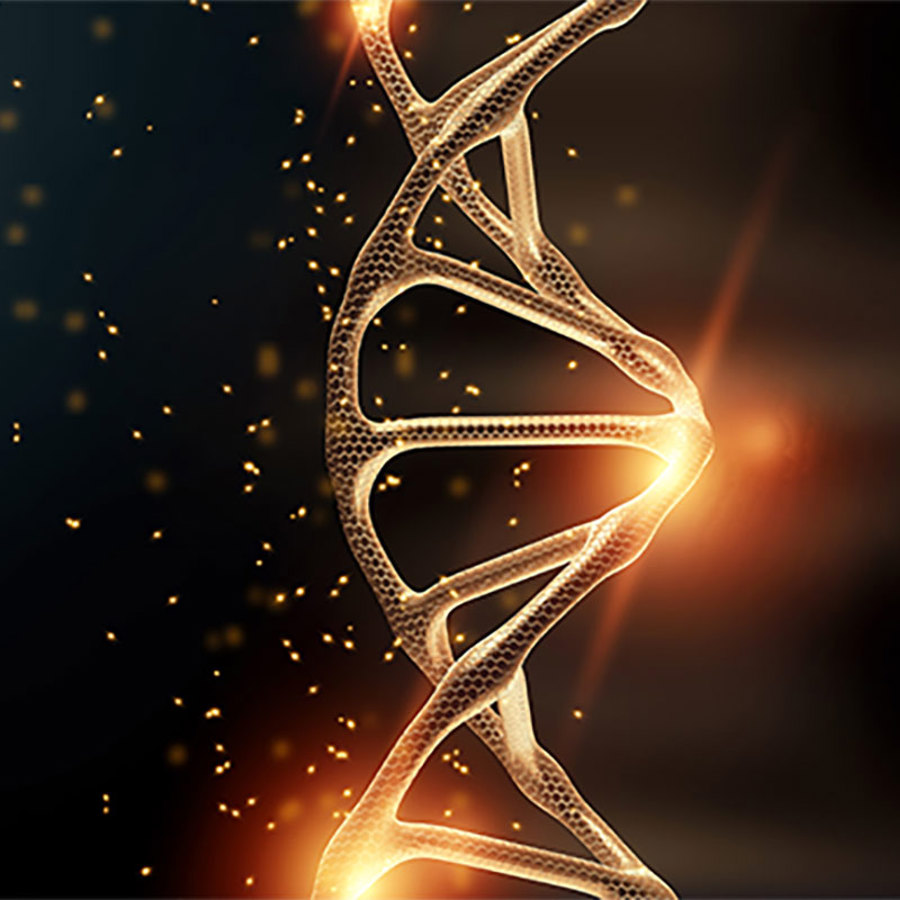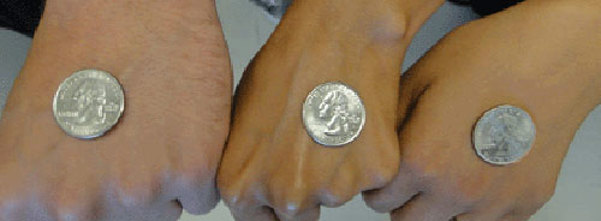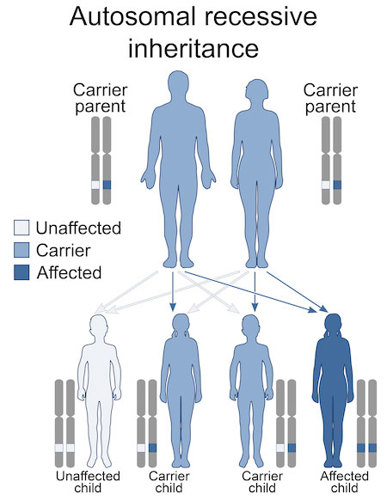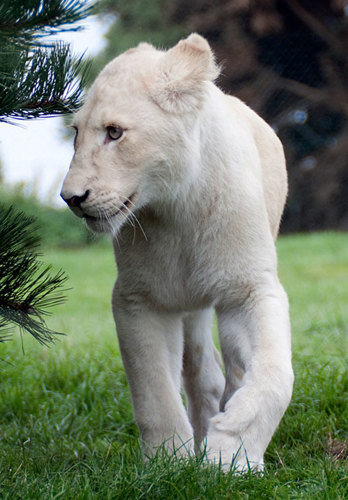
How does my son have albinism, when no one else in our family does?
March 19, 2014

- Related Topics:
- Albinism,
- Autosomal recessive inheritance,
- Carrier,
- Pigmentation traits,
- Skin pigmentation
A curious adult from Oregon asks:
“I have one son with albinism and one without. My husband is white, I am Indian (i.e., South Asian). The effect of my son’s albinism is NOT “white skin, white hair, pale eyes” but instead he has dark blond hair, dark blue-grey eyes, and pale skin but no paler than my Anglo-heritage husband. He would not look out of place at a family reunion on my husband’s side.
Neither I nor my husband have any (known) relatives with albinism. My question is how can it be that nobody – literally NOBODY – in either of our families has any record of there being relatives with albinism? In my husband’s family, maybe they could have “passed,” especially if their coloring was more like my son’s. But in my family, there’s just no way they would have gone unnoticed!”
Albinism must have come as a puzzling surprise! But your situation is not that uncommon. Lots of families have albinism pop up in their family seemingly out of nowhere.
This is because of the way albinism works. In most cases, it has to come from both parents. If only one parent carries it, then none of their kids will end up with albinism. This is one way albinism can hide in families for many generations, waiting for another carrier to be seen.
Imagine that each of your families has gone along with their hidden albinism. Over time none of you happened to have kids with someone who also had this hidden condition.
Then you and your husband met, each carrying albinism. Now each of your kids had a 1 in 4 chance for having albinism. They each also have a 1 in 2 chance for being a carrier like you and your husband and a 1 in 4 chance for not carrying albinism at all.
This might all sound rare, but situations like yours are more common than you might think. After all, around 1 in 70 people are thought to be carriers.

Albinism Means Little or No Pigment
Our coloring comes from the amount of pigment made in special cells called melanocytes. If these cells make a lot of pigment your skin will appear dark and if they don’t make a lot of pigment your skin will appear lighter.
Like many other traits in our bodies, our genes decide the amount of pigment our cells make. Making pigment is surprisingly complicated and needs many genes.
You can think of making pigment like making a car on an assembly line. Each gene adds a bit until you get to the finished product.
Just like an assembly line, if the process breaks down anywhere, you get no pigment at the end. And this of course is albinism.
An important gene in getting pigment made is called OCA (Oculocutaneous Albinism). When it isn’t working properly, the assembly line breaks down and you can end up with albinism.
Another gene important for getting pigment made is TYR (Tyrosinase). TYR is involved in the last step of production when the pigment is packaged and ready for delivery. If TYR stops working there will be no pigment being produced or delivered to your cells. So again if you have no working TYR genes, you’ll end up with albinism.
The OCA and TYR genes are not the only genes involved in getting pigment made but they are the major players. Broken forms of the OCA and TYR genes are involved in many cases of albinism.

Albinism Can Be Hidden
Our genes are stored in long stretches of DNA called chromosomes. Most people have 23 pairs of chromosomes for a total of 46. The OCA gene and the TYR gene are on chromosome 11.
One chromosome from each pair comes from mom and one from dad. This means we have two copies of most of our genes too, including OCA and TYR.
In order to end up with albinism, both copies of your OCA gene must have a glitch in them to make them no longer work. If just one copy doesn’t work right, then you won’t have albinism. One copy is enough to get the pigment made.
But as we can see in your case, having one non-working copy does mean that you can pass it on to your kids. People with one non-working copy of a gene like this are called carriers – they carry a silent copy of the gene.
Now let’s talk more about what could be happening in your family. You and your husband are both carriers of a gene that is unable to make pigment. It could be the OCA gene, the TYR gene, or another gene altogether.
As each of you has two copies of the gene, that means the other copy can make pigment normally. This is why you and your husband do not appear to have albinism.
To end up with albinism, your son would need to inherit non-working copies from both of you. In other words, he needs to get a non-working copy from mom and one from dad. When a trait is passed down like this it is called autosomal recessive.

This is the most likely way for your son to have ended up with albinism. Each of you happened to pass down a non-working copy down to him. He now had no working copies of the pigment-making gene and so ended up with albinism.
You have a 50% chance of passing down a normal working copy of the pigment-making gene and a 50% chance of passing down your non-working copy. The same is true of your husband. When we do the math*, each of your children has a 25% chance of receiving two non-working copies of the pigment-making gene and therefore having albinism. As you can tell from your kids, two carrier parents don’t only have children with albinism. It all comes down to probability.
*To figure out the chances of both of you passing down a non-working copy at the same time, you multiply the odds. So we multiply your 0.5 by your husband’s 0.5 and end up with 0.25 or 1 in 4.
Other Forms of Albinism
What I’ve gone through so far is the most common form of albinism. There are other forms too.
Another form of albinism is called Ocular Albinism (OA) and it is passed down differently. It doesn’t sound like your son has this form, but if you would like to learn more about OA click here.
Albinism in Nature
Albinism can be seen in other animals in nature, like the White Lion. White Lions have blue eyes and white fur because they have two non-working copies of the TYR gene. Remember that the TYR gene is responsible for the last step in making pigment. White Lions can inherit albinism the same way humans can!
Generally in the wild, the chance of having albinism is low. But many people have inbred the White Lion to make more lions with white coats. This inbreeding makes White Lions more common than they would otherwise be in the wild. More information on albino animals found in the wild can be found here.


Author: Natalie Chavez
When this answer was published in 2014, Natalie was a Ph.D. candidate in the Department of Biology, studying mechanical signaling in epithelial cells in James Nelson’s laboratory. Natalie wrote this answer while participating in the Stanford at The Tech program.
 Skip Navigation
Skip Navigation
